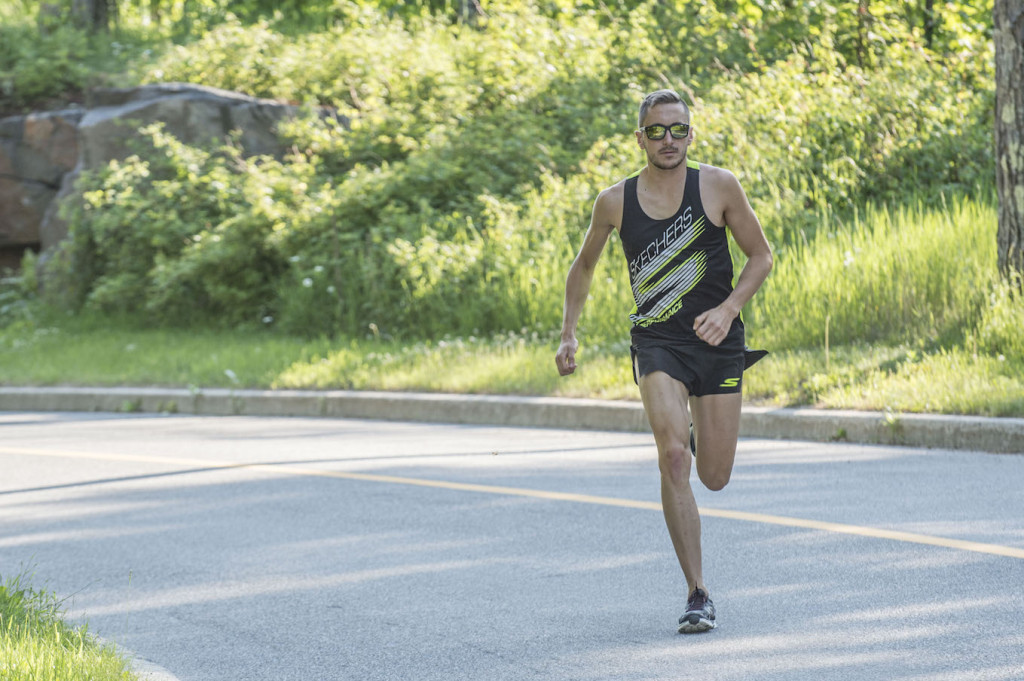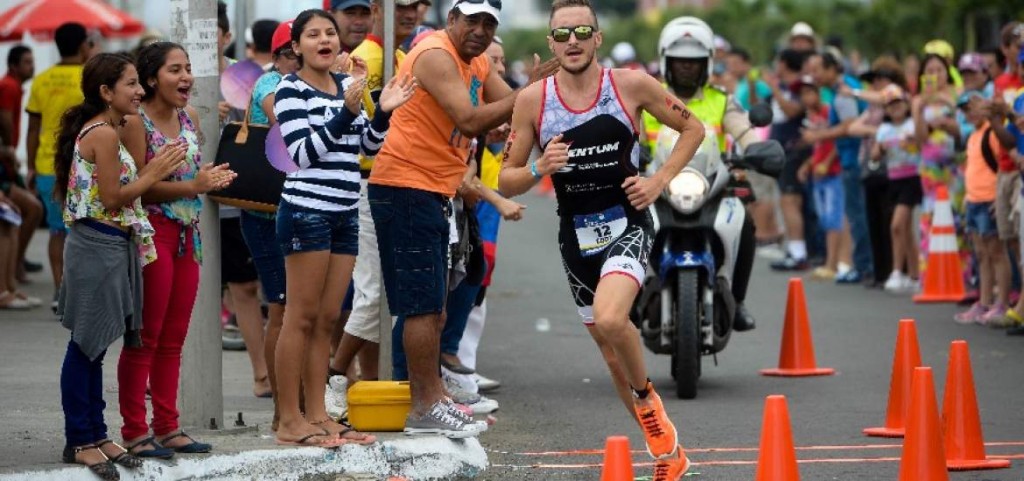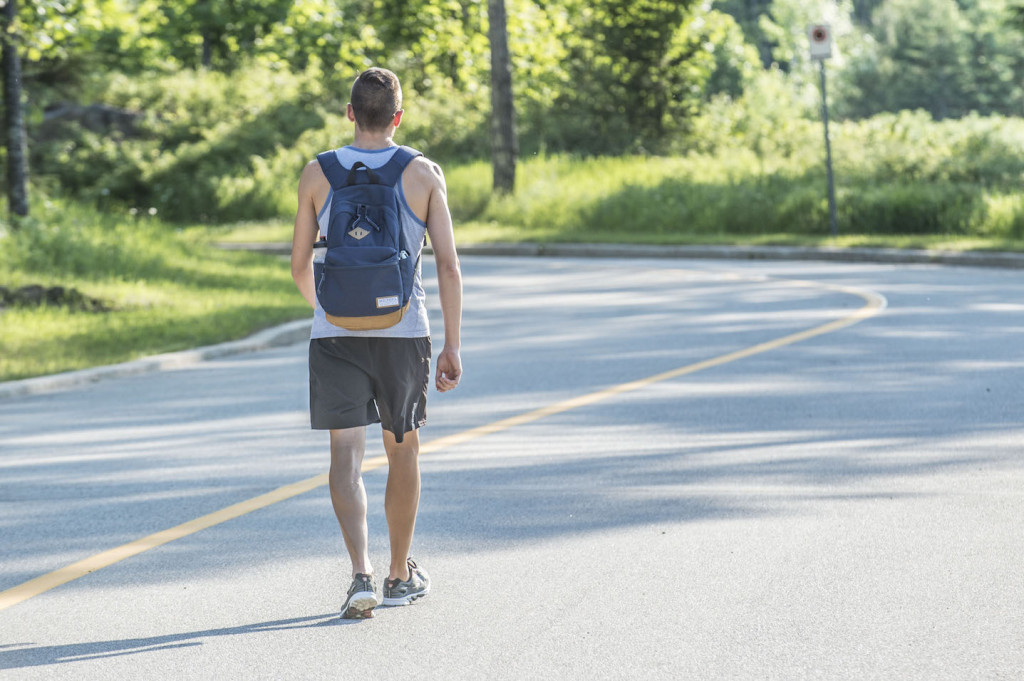How pro triathletes actually train is a subject shrouded in mystery. Only the athletes themselves and their coaches can say for sure, and most are pretty tight-lipped when it comes to divulging details. The tidbits that are dropped are more often than not misrepresented, exaggerated and out of context, like cherry-picked workouts posted on Strava. There’s also the ever circulating rumor that so-and-so has been training “like 45 hours a week!” and is going to destroy Kona! It’s rare to see a complete and honest record of pro triathlon training.
I try to be an open book—the pro who is willing to tackle any topic and answer any question, no matter how esoteric or personal. I used to share specifics of my training, but more recently, I’ve had to respect my coach’s intellectual property. After an excellent couple of years with David Tilbury-Davis at the helm, I recently decided to take the lead with planning my training. Despite my less than stellar history with self-coaching, I’m ready to do it right this time, armed with hard-earned knowledge and experience, plus David’s ongoing mentorship. This new arrangement means that I can be a lot more open about my training.
Every win brings a flurry of questions, and my win at Ironman 70.3 Ecuador in July was no different. There was enough curiosity to justify a post about my lead up to that race and my training in general. You can find a breakdown of a typical training week in July 2016 at the end of this post. But let’s begin with some notes to provide context and a summary.

Context/periodization: This block began in early July following a much-needed mid-season break after five Ironman 70.3 races between March and June. I took it very easy for seven days, ramped back up for a few days, then launched into this block, still carrying a good deal of fitness from earlier in the season. I repeated the same weekly cycle three times with minor variations before an abbreviated taper leading into Ironman 70.3 Ecuador. This was a lower priority race and late addition to my schedule. Given my goal of being at peak form for the ITU Long Distance World Championships in September, this block featured next to no “race specific” preparation. Instead, it was a highly polarized, VO2-focused block with a slight emphasis on cycling.
Summary: The three weeks that were the meat of this block averaged 6 swims totaling around 21,000 meters, 5 rides totaling about 9.5 hours (excluding short commutes to the pool), 9 runs totaling about 90 km and a minimal in-season conditioning routine consisting of a few sessions totaling 1-2 hours. This works out to a total training volume of about 22-24 hours per week.
My training tends to be on the lower volume, higher intensity side compared to my peers. This block in particular was more polarized than ever, meaning that I spent nearly all my time training very hard (400+W on the bike, ~3:00/km on the run) or easy (<240W on the bike, 4:10+/km on the run) with little time spent at intensities in between. This differs markedly from some past training blocks, such as the lead up to my win at Eagleman in 2015 when I rode 6-7 hours per week at a normalized power of 290-300W and ran around 100 km at an average pace of 3:50-4:00/km with a bias towards mid-range (tempo-threshold) intensities. Generally speaking, I’ve found that more polarized training gives me the most bang for my buck—more adaptation with less fatigue—though there are a time and place for all intensities over the course of a periodized season.
Structure: My training in this block was based on a seven day cycle with every Saturday as a recovery day. Most days, I wake up around 5-6am and have a leisurely breakfast while I get some work done and catch up on news. I start my first and usually the hardest session of the day around 7-8am. After that, I refuel and take a 30-120 minute nap every single day. Whenever I wake up, I get some more work done and then start my second session, followed by more food, a little more work and then my final session(s). I try to have my training done by 6pm and be in bed by 10pm or earlier most nights.
Every workout in this block was solo. I enjoy training with others, but I’m quite content to train alone most of the time. Swimming is the major exception, where other athletes and a coach on deck provide a huge boost. That’s one thing I miss out on while I’m at home in my small town.
Key sessions: The key workouts in this block were the Sunday long ride, the Tuesday and Thursday VO2 rides and the Friday treadmill run. I was willing to modify the other workouts to make sure that these were well executed.
Indoor training: In this block, I did the majority of my cycling on my CompuTrainer, almost everything except for my long ride. I’ve addressed indoor cycling in the past. In short, the trainer isn’t some magical shortcut, but I find it to be a great tool for precise, efficient workouts. On the other hand, most of my running was outdoors, with only one run per week on the treadmill. After experimenting with up to 90% of my mileage on the treadmill, I’ve concluded that it’s effective, but usually gives me an inflated sense of my fitness. The road and the track do not lie!
Swimming: Swimming was a somewhat lower priority in this block. My swimming is typically the first discipline to show signs of fatigue, in effect, the canary in the coal mine. I dialed swim workouts up or down as needed in order to nail my key sessions. I owe certain elements of my approach to Tim Floyd (Magnolia Masters) whom I worked with for a couple years. This includes use of fins during warm up and daily descending test sets.
Attention ‘Muricans: For the last time, you won’t find your backwards units here. Just recall that there are 2011.68 decimeters to a furlong and you’ll be fine!

Sunday
Ride endurance + tempo (4 hours, 150-155 km)
- 4 hours at 230-250W with 20 mins at 70.3 race power (~300-310W) near the end
- Ventum One outside. Focus on staying super aero. Use race nutrition during the last couple hours.
- This ride was shortened to ~3 hours the week before the race.
Run endurance + hills (~15 km)
- ~50mins @ 4:00-4:20/km
- 8×15 secs hill sprint with walk down recovery
- ~5mins cool down
- Choose a steep hill and focus on good form.
Monday
Swim aerobic density (~4,500 scm)
- Warm up: 100 mix, 2×[200 swim with fins, 200 kick with fins], 300 pull, 4×100 des @ 1:40
- Main set: 40-60×50 alternating 5-10 @ 45, 5-10 @ 40
- 5-8×100 pull paddles (Finis Agility)
- Cool down
Run easy post-swim (~3.5 km)
- ~15 mins easy home from the pool
- I do these short jogs home from the pool after most hard swims, partly because it’s a convenient way to commute home, but also because it keeps my run frequency high and may condition me to rapidly switch between the neuromuscular demands of the two sports.
Ride endurance (1.5 hours)
- 1.5 hours steady @ 220-240W
- Cross bike on CompuTrainer or outside
Core/yoga routine
- 20-30 mins various core exercises and sometimes yoga (this video shows some examples)
Tuesday
Ride VO2 pyramid (1.5 hours)
- 25 mins @ 230-250W
- 5×[15 secs surge, 45 secs easy]
- 5 mins @ ~310W, 5 mins easy
- 3×[3 mins @ 400-410W, 3 mins easy]
- 4×[2 mins @ 400-410W, 2 mins easy]
- 5×[1 min @ 410-430W , 1 min easy]
- 6 mins @ 230-250W
- Cross bike or Ventum One on CompuTrainer
Swim (~2,500 scm)
- 200 mix
- 2×[200 swim with fins, 200 kick with fins]
- 400 pull
- 4×[25 fast, 25 easy bk]
- 4×100 des @ 1:40
- 500-1,000 choice
- This is a standard 2-3 km swim that I typically do a few times per week. I’ll hit it hard when I feel good or really dial it back when I’m tired. I note my splits for the 4×100 descend and treat it as a test set to monitor fatigue, focus and fitness (a practice I picked up from Magnolia Masters).
Run endurance (~14 km)
- ~1 hour at easy endurace pace (4:20-4:40/km)
Wednesday
Swim descends (~4,500 scm)
- Warm up: 100 mix, 2×[200 swim with fins, 200 kick with fins], 300 pull, 8×50 des 1-4/5-8 @ 50
- Main set: 5×200 des @ 3:00, 100 bk easy @ 2:00, 5×150 des @ 2:15, 100 bk easy @ 2:00, 5×100 des @ 1:30, 100 bk easy @ 2:00, 5×50 des @ 45, 100 bk easy @ 2:00
- Cool down
Run easy post-swim (~3.5 km)
- ~15 mins easy home from the pool
Run track 400s or fartlek (13-15 km)
- 20-25 mins warm up @ 4:00-4:20/km with 5×100m accelerations
- 10×[400m hard, 400m cruise] on the dirt track (focus on effort rather than splits/pace)
- Cool down for ~1 hour total
- I did 400s the first week, substituted a recovery ride and some easier running the second week, and did a fartlek with 1-4 min intervals above 70.3 race pace the third week.
Kettlebell circuit
- ~25 mins of various exercises with a 16 kg kettlebell
Thursday
Ride short VO2 intervals (1.5 hours)
- 25 mins @ 230-250W
- 5×[15 secs surge, 45 secs easy]
- 5 mins @ ~310W, 5 mins easy
- 20 mins total of short intervals at 405+W with a 2:1 work-to-recovery ratio
- Remaining time @ 230-250W
- Cross bike or Ventum One on CompuTrainer
- This workout is David Tilbury-Davis’ devilry. I won’t share the precise structure out of respect for his intellectual property and your own safety and sanity. Suffice to say that it’s brutal but effective!
Swim (~2,500 scm)
- Same as Tuesday
Run recovery (7-8 km)
- 30-40 mins super easy (4:45+/km)
Core/yoga routine
- 20-30 mins various core exercises and sometimes yoga
Friday
Swim pacing (~4,500 scm)
- Warm up: 100 mix, 2×[200 swim with fins, 200 kick with fins], 300 pull, 4×100 des @ 1:40
- 6×[150 @ 2:00 – 1st 50 surge, 150 @ 2:00 – 2nd 50 surge, 150 @ 2:00 – 3rd 50 surge, +30 secs recovery]
- Odd rounds swim, even rounds pull with paddles.
- This swim is a tempo-like effort with surges above race pace to simulate the dynamic nature of the pro swim.
Run easy-post swim (~3.5 km)
- ~15 mins easy home from the pool
Run dreadmill VO2 (~23 km)
- 32 mins @ 4:10/km, all at 1% incline on the treadmill
- 8×[1 km @ 3:00, ~20 secs off belt recovery, 160 secs @ 4:20-4:30/km]
- 10 mins @ 4:10/km
- With 8 km of work above my open 10 km pace, this is a tough workout. Also, the kindly seniors who frequent my small town rec center probably think I’m a complete lunatic!
Ride recovery (1 hour)
- 1 hour super easy @ 180-200W
Saturday
Saturday is my weekly recovery day. I pencil in an easy run and swim, but everything is flexible and unstructured. The day is all about catching up on rest and calories, blowing off my to do list, unplugging from triathlon and hanging out with friends and family—whatever it takes to be focused and fresh enough to handle the coming week.
Run recovery (~6 km)
- ~30 mins super easy (4:45+/km)
Swim (~2,500 scm)
- Same as Tuesday and Thursday








